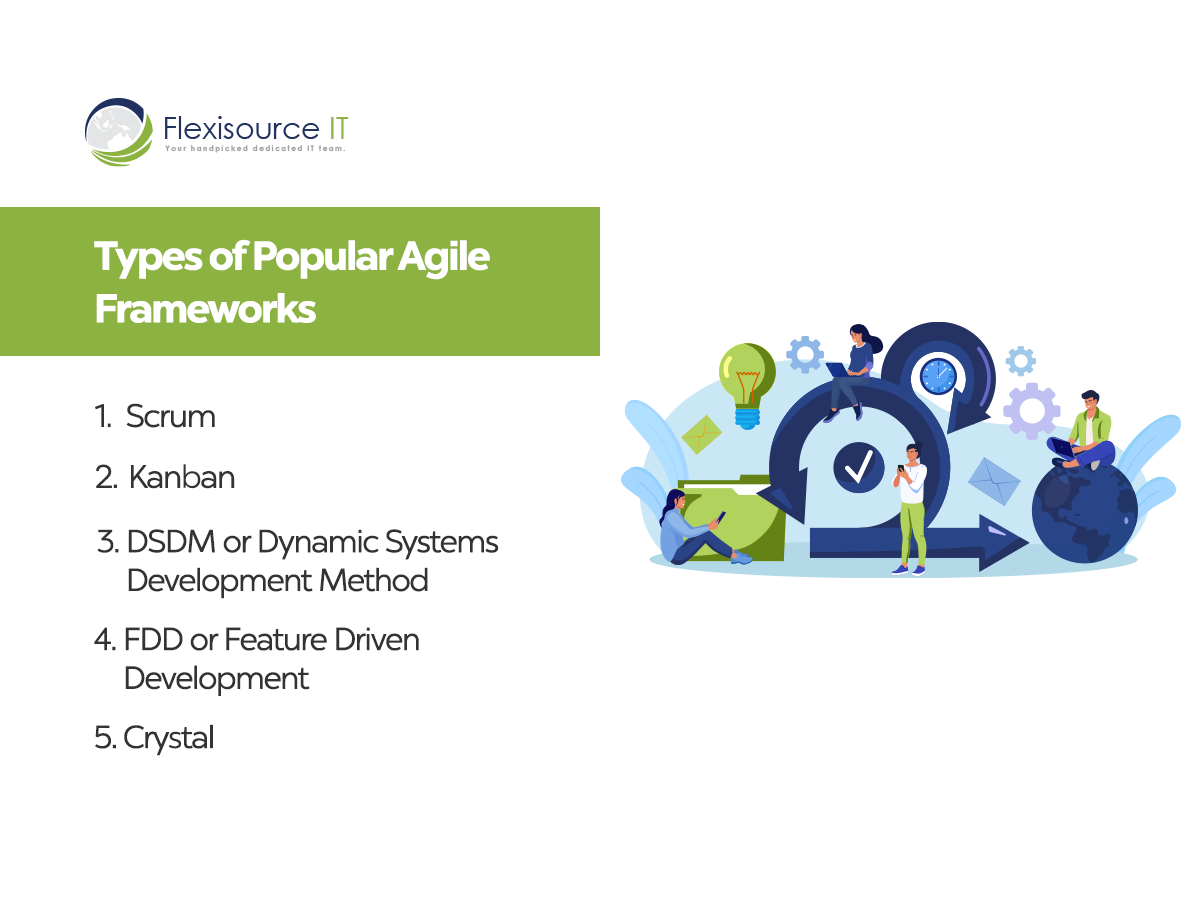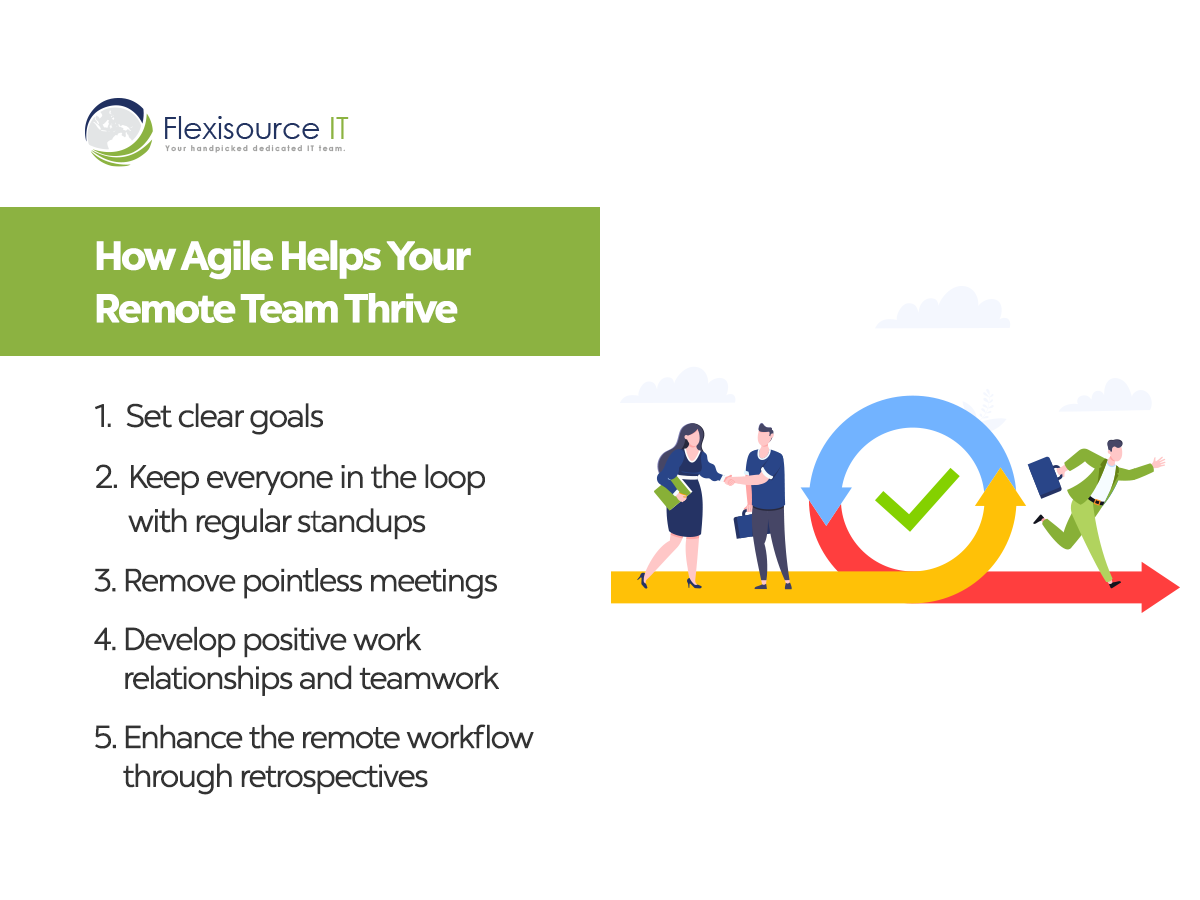Remote work has become increasingly popular in recent years. However, many employees find it difficult to get the most out of their remote work opportunities due to a lack of tools and resources.
Agile project planning can make your remote work easier by helping you streamline communication and collaboration between teams. By using Agile practices, you can make your remote work environment as effective as possible and get more out of your work.
In this article, we will discuss how the Agile methodology can make your work easier and faster. We will discuss the benefits and the different types of Agile frameworks.
Types of Popular Agile Frameworks
There are a variety of Agile frameworks, each with its own set of features and benefits.

Scrum
Many software development teams are turning to the scrum methodology to manage their projects. Scrum is an Agile process that helps teams manage and complete complex projects. The scrum process is made up of three key components: the sprint, the backlog, and the burndown chart.
A sprint is a short time period, typically two to four weeks, in which the team completes a set of tasks. The tasks are pulled from the backlog, which is a list of all the tasks that need to be completed for the project. The burndown chart helps track the progress of the sprint and ensures that all tasks are completed on time.
Kanban
The Kanban methodology is a visual system that helps optimize the workflow through a process. It can be used in software development, product development, and other areas where work needs to be done in a timely manner.
The Kanban methodology was created by Toyota engineer Taiichi Ohno in the 1940s as a way to improve the flow of materials through the Toyota factory. This system uses cards to track inventory and make sure that materials are delivered just in time for production.
In recent years, this type of methodology has been adapted for use in Agile software development projects. The Kanban board is used to visualize the work process and optimize the flow of work.
DSDM or Dynamic Systems Development Method
The Dynamic Systems Development Method (DSDM) is an Agile project management methodology. It was developed as an alternative to waterfall project management in the early 1990s. DSDM is a lightweight, iterative, and incremental approach to delivering high-quality software quickly.
It is based on the idea of “continuous improvement,” which means that projects are always getting better as they go along.
DSDM is popular with software developers because it allows them to rapidly create and test prototypes. The iterative approach means that developers can get feedback from users early and often, which leads to better-quality software.
DSDM also encourages team members to work together, which helps make sure that everyone knows what the project’s goals and objectives are.
FDD or Feature Driven Development
The FDD approach organizes work around features. A feature is a cohesive set of changes that deliver value to the customer. The goal of FDD is to ensure that every feature is completed in a timely manner and meets the customer’s needs.
FDD starts with a high-level understanding of the system requirements. This is used to create a feature list. The team works on the highest priority features first, ensuring that each one meets the customer’s needs. As new requirements are discovered, they are added to the list and prioritized accordingly.
The team then uses short iterations to build and test features. At the end of each iteration, the team demonstrates to the customer the features they have completed. If any features need additional work, they are prioritized and added back into the next iteration plan.
Crystal
What makes Crystal different from the other types of frameworks is that it focuses on people and their interactions instead of processes and tools.
The Crystal Agile framework has two underlying principles. First, teams must come up with ideas on their own to enhance and streamline their work processes. Secondly, this framework stresses that every project is different and always changing, so the best people to decide how to do the work are the people who are working on it.
The great thing about this framework is that it lets teams work in the way they think is best.
How Agile Helps Your Remote Team Thrive
The Agile methodology is an iterative and incremental software development framework that enables teams to respond to change quickly. There are many benefits of adopting an Agile framework. Let’s take a look at some of them.

Set Clear Goals
Managers who use an Agile methodology to manage their remote team members can set clear goals for them and ensure that everyone is on the same page. This methodology involves planning, setting goals, and then checking in on a regular basis to ensure that everyone is still on track. This allows managers to keep their remote team members accountable and ensure that they are meeting the goals that were set.
For each sprint, no matter how long or short, the Agile method calls for planning and setting clear goals. So, even if members of a remote team are in different parts of the world, they will always know the goals, expectations, and deadlines for each task.
The Agile method also allows for flexibility, so if something changes along the way, the team can adapt quickly. This flexibility is essential when working with a remote team, as things can change quickly when you’re not all in the same room.
The Agile development process has been proven to be successful for both small and large businesses.
Keep everyone in the loop with regular standups
Standups are a vital aspect of an Agile work setup. These are short meetings that take anywhere from 10 to 15 minutes, making them super easy to implement in a remote team’s workflow. They consist of everyone metaphorically standing up in a circle and sharing what they did yesterday, what they’re working on today, and any blockers they’re experiencing.
This meeting structure is perfect for remote teams because it doesn’t require everyone to be in the same physical space at the same time– which can be tough when team members are spread out all over the globe. It also keeps everyone updated on their progress in a concise and easily digestible manner.
Daily standups are also a good way for team members to get to know each other and build team spirit. This is especially important for remote teams that don’t get a lot of chances to talk to their coworkers in person.
Remove pointless meetings
Do you have a meeting to discuss the meeting? If so, that’s unnecessary. And it’s just one example of the waste that Agile is designed to remove.
Meetings are often seen as a necessary evil, but they don’t have to be. They can be long, tedious, and oftentimes unproductive. However, they can also be necessary for effective communication and collaboration.
So, how can you tell when a meeting is necessary and when it’s just taking up time?
Agile removes the unnecessary parts from your work processes, which can include pointless and time-consuming meetings. By focusing on what’s important and eliminating everything else, Agile allows you to get more done in less time.
Develop positive work relationships and teamwork
Employees who work in an Agile environment generally have more positive work relationships than those who don’t. In fact, studies have shown that employees who are able to move quickly and easily between tasks are typically more engaged and satisfied with their work.
This is because Agile allows for more flexibility, spontaneity, and creativity, all of which contribute to a better work-life balance. Employees feel less rushed and stressed out, which leads to a more positive attitude in the workplace.
Moreover, the Agile approach helps build rapport by encouraging communication and collaboration among team members. Short sprints and frequent check-ins with remote team members can help bond the team.
Developing personal relationships with team members through daily brief meetings will directly result in fewer confusions, improved self-organization, and increased morale.
By working together towards common goals, employees are able to develop trust and mutual respect for one another.
Enhance the remote workflow through retrospectives
Retrospectives are key to remote work setups. They help team members reflect on their work and identify ways they can improve. The benefits of Agile retrospectives include:
- Identifying areas where the team is doing well and where they need to continue to focus effort.
- Helping team members understand how their work impacts the rest of the team.
- Facilitating communication among team members.
- Encouraging team members to experiment and try new things
Lastly, you can use the feedback you get from your team to improve the overall working environment. Determine how you can assist employees in carrying out their work in a more efficient manner by evaluating the blockers they encounter on a daily basis.
Is Agile right for your team?
Agile methodology can help remote teams thrive by setting clear goals, keeping everyone in the loop, removing pointless meetings, developing positive work relationships, and enhancing workflow. With this framework, remote teams can work more efficiently and effectively together, regardless of location.
If you want to learn more about this framework, download our FREE Agile Case Study today!
Viel is a writer with a passion for weaving words into stories that capture the imagination and engage the public. An avid reader and enthusiastic foodie, she can often be found with a mug of coffee in hand. When she’s not writing, she loves spending time with her family and friends.



